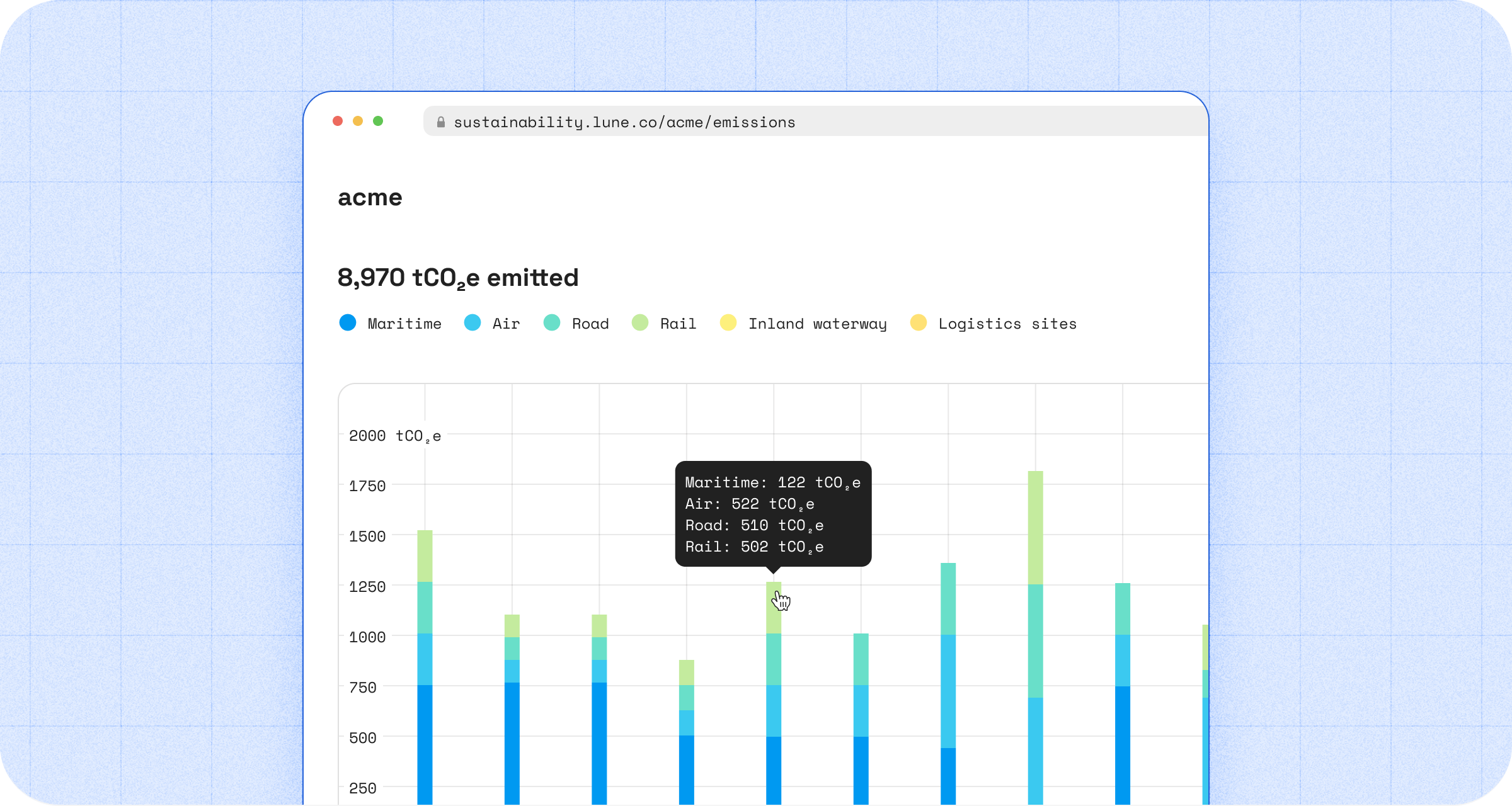

Climate leaders are moving into the fast lane in pursuit of decarbonisation. They want to surpass industry standards. But only granular emissions data can track and accelerate effective decarbonisation. This is why Lune has launched fuel-based emission calculations for road freight.
Why do we need granular emission calculations for road freight?
The global road freight market shows no signs of slowing down. In 2020, the market was valued at approximately USD 324.5 billion and is expected to reach USD 417 billion by 2025. In the EU alone 77% of inland freight was moved by roads. Yet climate regulations like the EU ETS2 expect road transportation to slash emissions by 42% by 2030 (vs. 2005 levels).
Free download: The push and pull factors of green supply chains
The race to net zero is on. However, only granular road freight emission calculations can track and inform effective decarbonisation. Calculations based on industry averages aren’t enough.
This is why Lune’s logistics customers can now empower their end-users with calculations that accurately model truck fuel consumption. By enriching your data with Lune’s fuel-based road freight emission calculations they can measure, track, and accelerate the decarbonisation of their scope 3 transport and distribution emissions.
How precise are Lune’s road freight emission calculations?
While Lune's road freight emission calculation methodology is anchored in the industry-leading GLEC Framework, audited and accredited by the Smart Freight Centre, and compliant with ISO 14083 — the latest enhancements go beyond industry standards.
Logistics end-users can accelerate their decarbonisation goals using Lune’s best-in-class calculations. These calculations precisely model truck fuel consumption by accounting for:
- Custom fuel blends, including sustainable and biofuel blends
- Road gradients, e.g. flat, or hilly terrain
- Traffic situations, e.g. urban vs. motorway vs. rural
- Custom load factor and empty runs
- Engine emission standards e.g. Euro 1 to 6
 Lune road emission calculations precisely model truck fuel consumption by accounting for multiple variables.
Lune road emission calculations precisely model truck fuel consumption by accounting for multiple variables.By using these precise calculations, logistic platforms can measure the impact of decarbonisation efforts, such as using sustainable fuels, maximising load capacity, and reducing wasteful empty runs. End-users can also map and report decarbonisation efforts using Lune’s carbon intensity analytics.
 End-users can also map and report decarbonisation efforts using Lune’s carbon intensity analytics.
End-users can also map and report decarbonisation efforts using Lune’s carbon intensity analytics.Enriching logistics data with Lune’s industry-leading emission calculations
The race to net zero is on. While the industry competes on time, price, and reliability, logistics platforms can gain a competitive edge by offering road freight emission calculations that prove the effects of decarbonisation.
By partnering with Lune, they can win new deals by accelerating their customer's scope 3 transport and distribution decarbonisation goals across multiple transport modes. It’s time for climate action.
To start empowering your customers to decarbonise their emissions, request a demo.
Readers also liked
Readers also liked

Subscribe for emissions intelligence insights
Get the latest updates in the world of carbon tracking, accounting, reporting, and offsetting direct to your inbox.

